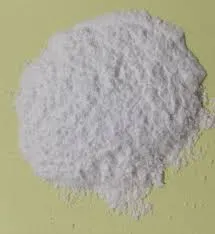- Afrikaans
- Albanian
- Amharic
- Arabic
- Armenian
- Azerbaijani
- Basque
- Belarusian
- Bengali
- Bosnian
- Bulgarian
- Catalan
- Cebuano
- Corsican
- Croatian
- Czech
- Danish
- Dutch
- English
- Esperanto
- Estonian
- Finnish
- French
- Frisian
- Galician
- Georgian
- German
- Greek
- Gujarati
- Haitian Creole
- hausa
- hawaiian
- Hebrew
- Hindi
- Miao
- Hungarian
- Icelandic
- igbo
- Indonesian
- irish
- Italian
- Japanese
- Javanese
- Kannada
- kazakh
- Khmer
- Rwandese
- Korean
- Kurdish
- Kyrgyz
- Lao
- Latin
- Latvian
- Lithuanian
- Luxembourgish
- Macedonian
- Malgashi
- Malay
- Malayalam
- Maltese
- Maori
- Marathi
- Mongolian
- Myanmar
- Nepali
- Norwegian
- Norwegian
- Occitan
- Pashto
- Persian
- Polish
- Portuguese
- Punjabi
- Romanian
- Russian
- Samoan
- Scottish Gaelic
- Serbian
- Sesotho
- Shona
- Sindhi
- Sinhala
- Slovak
- Slovenian
- Somali
- Spanish
- Sundanese
- Swahili
- Swedish
- Tagalog
- Tajik
- Tamil
- Tatar
- Telugu
- Thai
- Turkish
- Turkmen
- Ukrainian
- Urdu
- Uighur
- Uzbek
- Vietnamese
- Welsh
- Bantu
- Yiddish
- Yoruba
- Zulu
វិច្ឆិកា . 25, 2024 21:54 Back to list
can i use jeyes fluid on my dog
Can I Use Jeyes Fluid on My Dog?
Pet owners always strive to create a safe and healthy environment for their beloved companions. With the myriad of cleaning products available today, it’s essential to discern what is safe for pets and what is not. One product that often raises questions among dog owners is Jeyes Fluid—a powerful disinfectant that has been used for decades in various cleaning and disinfecting applications. But can it be safely used on your dog? Let’s explore the implications of using Jeyes Fluid around your furry friends.
Understanding Jeyes Fluid
Jeyes Fluid is a concentrated disinfectant that has been traditionally used for outdoor areas, such as patios and paths, as well as in agricultural and industrial environments. It is effective against bacteria, fungi, and viruses. The formulation contains a variety of active ingredients, primarily phenolic compounds, which contribute to its potent disinfecting properties. However, these same ingredients raise concerns when it comes to safety around pets.
Risks to Dogs
While Jeyes Fluid is an effective cleaner for various surfaces, its components can be harmful to dogs. If ingested, absorbed through the skin, or inhaled, Jeyes Fluid can lead to a variety of health issues in dogs, including
1. Skin Irritation Direct contact with the skin can cause irritation or chemical burns, especially in sensitive areas. Dogs that have an existing skin condition are at a heightened risk.
2. Respiratory Problems Inhaling the fumes or particles from Jeyes Fluid can lead to respiratory distress. Symptoms may include coughing, wheezing, difficulty breathing, and lethargy.
3. Gastrointestinal Distress If ingested, Jeyes Fluid can cause symptoms such as vomiting, diarrhea, and abdominal pain.
4. Toxicity Many cleaning agents, including Jeyes Fluid, can be toxic. Depending on the amount ingested, dogs can experience severe health complications, warranting immediate veterinary attention.
Best Practices for Cleaning Around Dogs
can i use jeyes fluid on my dog

Given these potential risks, pet owners should approach the use of Jeyes Fluid with caution. Here are several best practices for cleaning while ensuring the safety of your dog
1. Avoid Use Indoors To minimize the risk of exposure, it’s best not to use Jeyes Fluid indoors where your dog may be present.
2. Thoroughly Rinse Surfaces If Jeyes Fluid is used outdoors, ensure that surfaces are thoroughly rinsed and dried before allowing your dog to walk or play in those areas. This will help reduce the likelihood of skin contact or ingestion of leftover residue.
3. Separate Cleaning and Play Areas Designate specific areas for cleaning that are separate from your dog’s play spaces. This can help prevent accidental exposure to harmful chemicals.
4. Choose Pet-Safe Alternatives Consider using pet-safe cleaning products that are specifically designed to be non-toxic and gentle on animals. There are many alternatives available on the market that can effectively disinfect without posing risks.
What to Do If Exposure Occurs
If you suspect that your dog has been exposed to Jeyes Fluid or any other harmful cleaning product, it's important to act quickly
- Contact Your Veterinarian Inform your vet about the exposure, symptoms, and the amount of product involved. This information will help guide treatment decisions. - Observe for Symptoms Keep a close eye on your dog for any signs of distress, such as vomiting, lethargy, or unusual behavior.
- Avoid Home Remedies Trying home remedies without consulting a veterinarian can sometimes do more harm than good.
Conclusion
In summary, while Jeyes Fluid is a powerful disinfectant, it is not safe for use around dogs. The potential for skin irritation, respiratory issues, and gastrointestinal distress makes it a risky choice for pet owners. Prioritizing your dog's safety means opting for pet-safe cleaning products and employing careful cleaning practices. Always err on the side of caution, and when in doubt, consult your veterinarian for advice on safe cleaning solutions that will keep your home disinfected without endangering your furry friend’s health.
-
Guide to Oxytetracycline Injection
NewsMar.27,2025
-
Guide to Colistin Sulphate
NewsMar.27,2025
-
Gentamicin Sulfate: Uses, Price, And Key Information
NewsMar.27,2025
-
Enrofloxacin Injection: Uses, Price, And Supplier Information
NewsMar.27,2025
-
Dexamethasone Sodium Phosphate Injection: Uses, Price, And Key Information
NewsMar.27,2025
-
Albendazole Tablet: Uses, Dosage, Cost, And Key Information
NewsMar.27,2025













